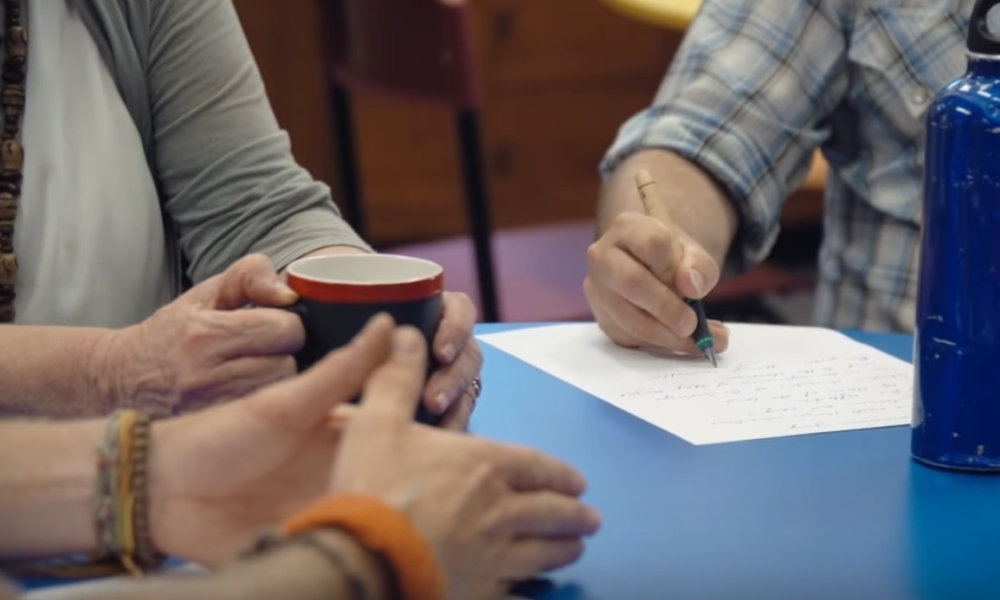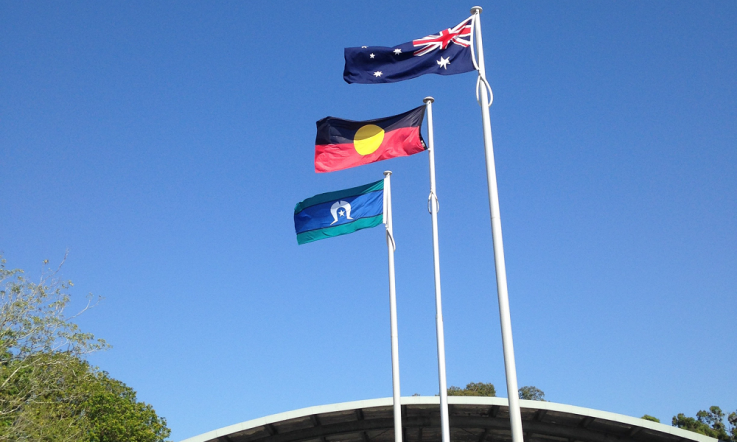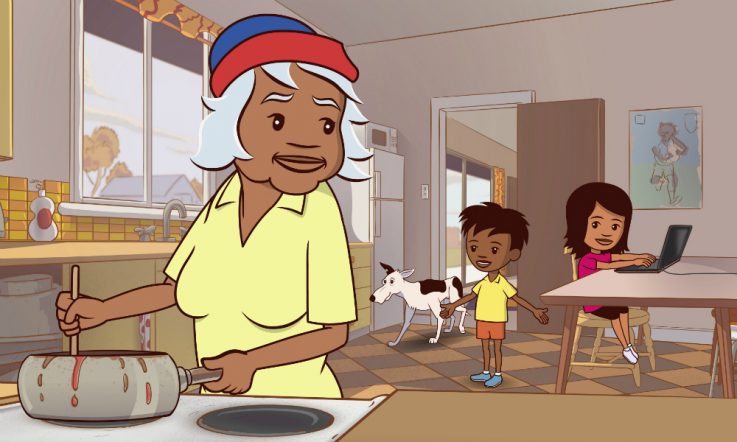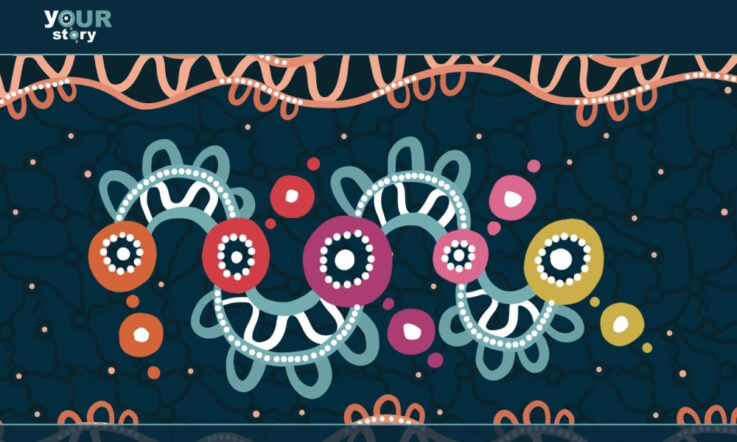Creating a school Reconciliation Action Plan (RAP) is a way to formalise your commitment to building and sustaining strong relationships with Aboriginal and Torres Strait Islander peoples, embedding respect, and providing opportunities to improve outcomes for students and the wider community.
It’s a great first step, but it’s only the beginning – fleshing out details of exactly how you’ll follow through on those commitments, setting up support structures, monitoring progress and regularly reviewing your RAP to ensure it remains relevant to your context and community all help to maximise its effectiveness.
The biennial Narragunnawali Awards recognise schools and early learning services that are implementing outstanding reconciliation initiatives. Queanbeyan Public School (QPS), in New South Wales, were winners of the school award in 2017.
Wendy Attwood took on the Principal role at QPS last year and tells Teacher that continuing this good work was one of her priorities. ‘The previous principal, Kym Hawes, had done some amazing work getting the RAP off the ground and in the area of leading the community in relation to Aboriginal education, and hence the Narragunnawali Awards. I was very proud to be able to hopefully continue that work and to grow it further.
Building on strengths and expertise
QPS has an enrolment of just over 620, with 10 per cent of students from an Aboriginal background and 23 per cent from language backgrounds other than English. ‘We have a strong partnership with our local community,’ Attwood says. ‘Coming in it was all new learning for me, so it’s been an amazing opportunity in terms of having the RAP as a platform to connect with what is happening in the community, and also to work with skilled staff and acknowledge their expertise in that area of Aboriginal education as well.’
Attwood says one of the school’s strengths is its Aboriginal Education Group (AEG), which includes teacher representation from all year groups. ‘We meet fortnightly; it’s a solid commitment, it’s on our calendar, it’s diarised, we have an agenda. We encourage community to come – unfortunately our community member, Mrs Annette Christou, retired at the end of last year but is still keen to be involved. This year our goal is to engage more families as well.’
Although the principal takes ultimate responsibility for the RAP, she says one of her early goals was to ensure the planning, implementation and review process was shared among staff. The plan is reviewed and updated annually by members of the AEG. ‘Another part of moving the AEG forward was, again, to make sure it doesn’t land on the shoulders of one, two or three key players.
‘I introduced last year the idea of a coordinator that wasn’t me or a member of the senior executive. We have an amazing classroom teacher, Shannen McClymont, who volunteered to coordinate the AEG. And I’m very excited about that, because one of our strategic directions is around leadership at all levels and it’s a really great opportunity for an aspiring leader. She really well supported in the role by the executive and has done an amazing job.’
Reviewing the plan and its progress
Two school staff from the AEG are responsible for reviewing the action plan, with support from a member of the senior executive. They also engage other colleagues at different points in the process. The review takes around two full days for the two staff (spread across six weeks) and the school funds their release from class to do this work. ‘It’s just going through – Did we achieve what we set out to do? If not, why not? What are our success measures? Where to next? And, how do we embed the things that we’ve achieved?’ Attwood says.
She explains that a ‘deconstructed’ version of the 24-page plan, produced last year, includes timelines for actions, allocation of responsibilities and information on measurement of outcomes. ‘It’s the “Who, Why, When, Where, How – you know”. Then we just bunkered down to support each other in making those actions happen. Again it’s not just the principal or the executive who are responsible for ensuring the actions occur; the engagement levels from all staff has been outstanding. It’s very easy to say we’re going to do all of these things – the next step is, whose responsibility is it and how can we support that person?’
Implementing the RAP – what it looks like in practice
The Narragunnawali RAP Framework outlines a sustainable, whole-scale approach to driving reconciliation in education by building relationships, respect and opportunities in the classroom, around the school and with the community.
Attwood says, from joining QPS, it became clear that there is change over staff all the time, including having a new principal. Although she was able to read the RAP and the School Plan, and talk to people in the school and wider community, she wanted to ensure that new staff were aware of the important work done by the previous principal. ‘That, regardless of who was on staff each year, they had knowledge of how our school does things in relation to Aboriginal education.
‘So, what came out of the RAP last year is that we made a commitment to doing an induction for all new staff at the beginning of every year in relation to how we lead Aboriginal education in our school. We had two staff development days at the beginning of this year, with one dedicated to that induction. And so, one of the things that we talked about on that day was Acknowledgement of Country – every class creating an Acknowledgement of Country together within the first few weeks of the school year.’
Alanna Raymond, from Reconciliation Australia, ran a one hour professional learning workshop with all QPS staff around how to create an Acknowledgement of Country with students, with the expectation that it would be done in 100 per cent of classes.
‘Another thing we do is, at the end of last year we released our teachers to write units of work based on the theme of belonging and connectedness and we used quality texts written by Aboriginal authors to form the foundation of those units. They were taught in the first two to three weeks of this year.
‘Our goal there was to ensure that we had some processes in place to ensure that students began connecting and had a strong sense of belonging after coming back after the holidays. So, that’s been really positive as well in terms of 23 classes all teaching a unit of work with those themes of connectedness and belonging and using quality texts by an Aboriginal author. So, that was quite exciting and I’m proud of that.
‘Now, it’s not perfect by any means, and we’re looking forward to growing that unit of work so that we can do it again next year at the beginning of the year and strengthening that planning process around curriculum.’
The Narragunnawali Awards are an initiative of Reconciliation Australia. The closing date for applications for the 2021 awards is Friday 14 May. To find out more, and to access information and resources on developing an RAP, visit https://www.narragunnawali.org.au/.
As a school leader, what are the strengths of your staff and local community?
What opportunities do you provide for staff to build and extend their knowledge and understanding of Indigenous histories and cultures?
When teaching about Indigenous histories and cultures, do you have Aboriginal and Torres Strait Islander people present in the classroom to share their knowledge and experiences?



